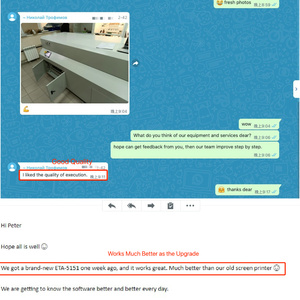
All categories
Featured selections
Trade Assurance
Buyer Central
Help Center
Get the app
Become a supplier

(1735 products available)




















A PCB cutting machine, or Printed Circuit Board Cutting machine, trims or cuts circuit boards into specific shapes and sizes. Therefore, it aids in the production and assembly of electronic components. There are generally three types of PCB cutters:
Proper maintenance of a PCB cutting machine, regardless of its specifications, is key to its efficiency and longevity. Regular service checks for fragile parts like blades and tracks can quickly prolong their life span. Additionally, users should develop an efficient maintenance schedule outlining regular tasks, inspection routines, cleaning guides, lubrication points, calibration procedures, blade change timelines, and more. Such a strategy ensures systematic care and predictable performance.
All devices benefit from bespoke attention. Hence, user manuals should always be consulted first to yield specific recommendations tailored toward particular models of PCB cutting devices in use. Nonetheless, some general guidelines apply universally across all types: cleaning regularly prevents dust build-up, which impairs functionality; lubricating moving parts reduces transfer friction, enhancing cutting accuracy; replacing worn-out components, especially blades, timely prevents compromised product quality, while ensuring safety standards are upheld, further enhanced by correctly training operators on how to handle such equipment safely.
Ultimately, investing in a good maintenance program is as critical if not more so than purchasing high-cut quality machines. It helps avoid unnecessary repair costs resulting from neglecting priceless investments like PCBs, which require precise-cutting tools to achieve desired results impeccably.
The PCB depaneling machine plays an important role in the manufacture of PCBs. Its main function is to cut the PCB, usually after assembly. This is especially useful when the PCB consists of separate smaller PCBs closely linked together, often referred to as 'fried eggs' or 'matrix' layouts.
Overview of the PCB cutting machine's applications:
Overall, the PCB cutting machine is an essential tool for manufacturers to precisely cut and trim PCBs to meet their needs and specifications.
When looking to buy a PCB cutting machine for resale, it's important to first look at the features and specifications of the machine. Once the details of the machine to be purchased have been figured out, including the type and size of the PCB the cutting machine is meant to handle and the level of precision and complexity required for the specific PCB design, then calculating the maximum carrying capacity of the machine is essential to know the maximum number of PCBs the cutting machine can cut at once. This is also an important feature to consider while looking to buy the machine for resale.
Also, compare the price of the machine with similar models of the machine on the market. While some models will be pricier because they have unique features, such as laser cutters or those that have certain automated features, it may not be worth incurring extra costs, as customers may not be willing to pay the price that is required to sell the machine to make a profit. Ensure to also look at the after-sales services and warranty for the machine, as this can affect the overall price and the resale value to customers. A machine with a solid warranty and good after-sales service will have a better resale value to customers. Finally, when in doubt, it's always best to consult with an expert if looking to invest in bulk in a specific type of PCB cutting machine.
Q1: What are the trends in the PCB cutting machines market?
A1: The trends in the PCB cutting machines market include the increasing adoption of automated cutting machines, the growing demand for miniaturized electronic devices, and the rising trend of precise and efficient cutting solutions. Additionally, the market is witnessing the introduction of advanced technologies such as laser cutting and routed cutting, which offer higher accuracy and quality.
Q2: What are the main types of PCB cutting machines?
A2: There are several types of PCB cutting machines available in the market, such as the manual shear cutter, router cutter, laser cutter, and CNC cutter. Each type offers distinct features and advantages for cutting PCBs accurately and efficiently.
Q3: How do buyers find the right PCB cutting machine for their needs?
A3: When looking for the right PCB cutting machine, consider the production volume, the type of material to be cut, the desired cutting accuracy and quality, as well as the machine's ease of use and maintenance requirements. It's also helpful to research and compare different models to find the one that best fits the specific application.